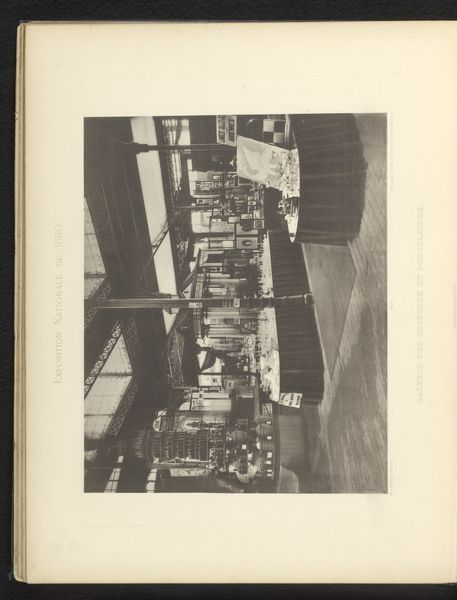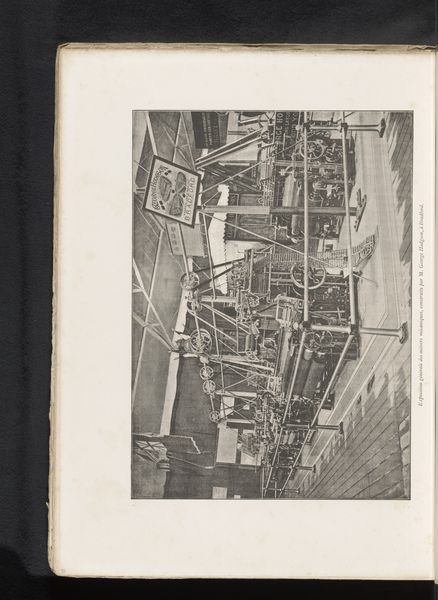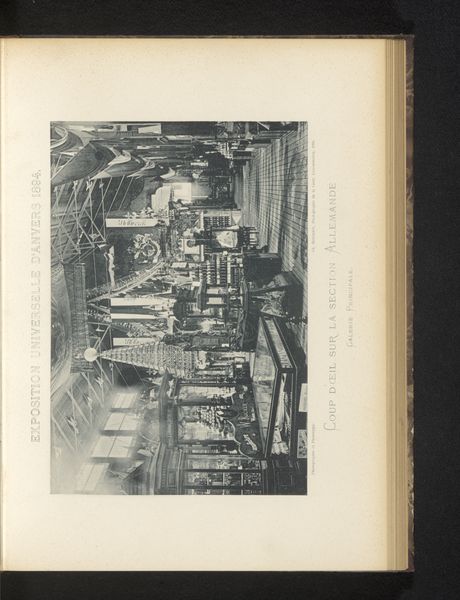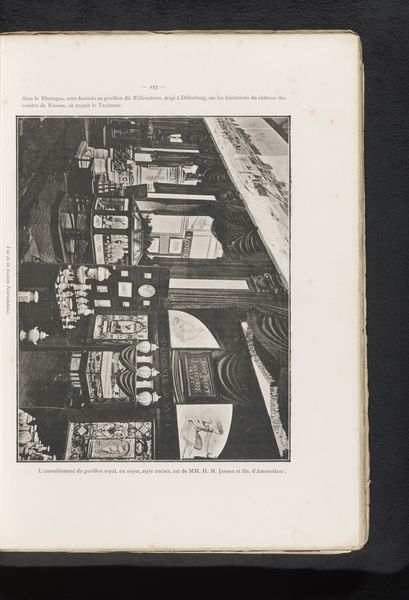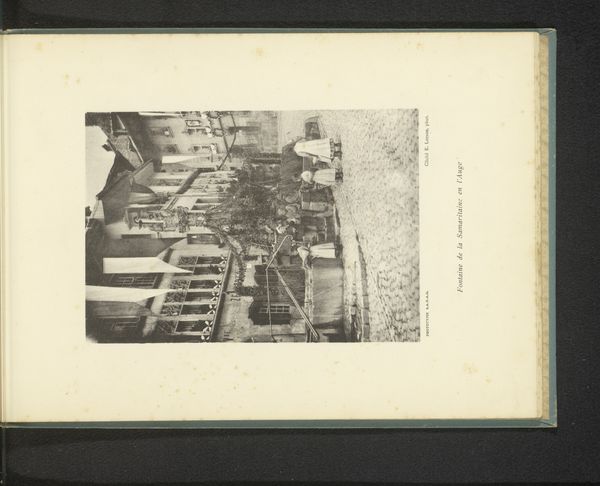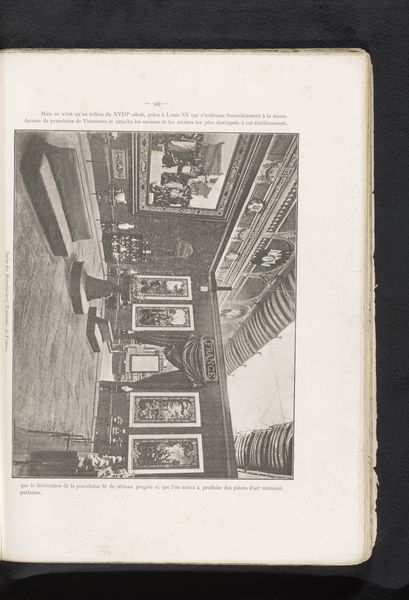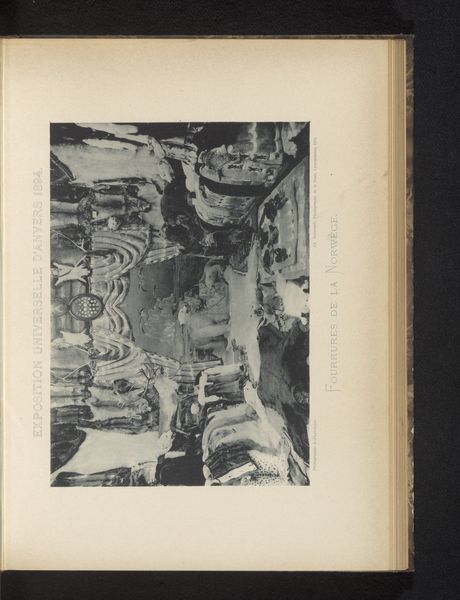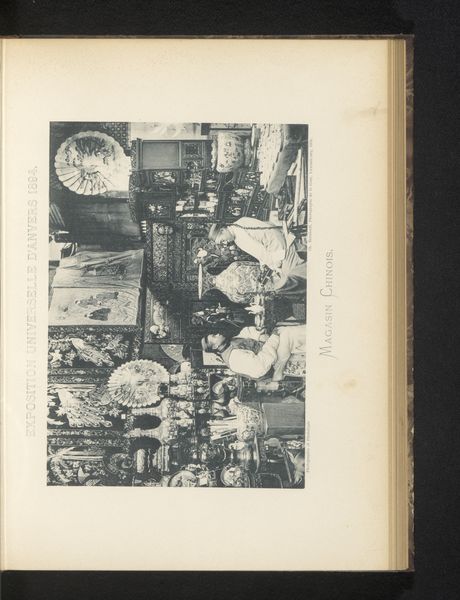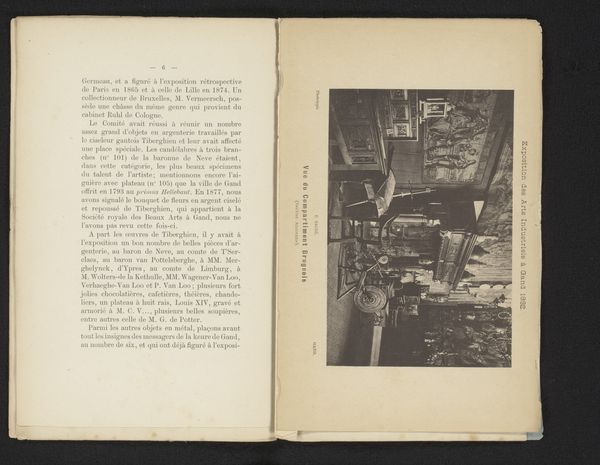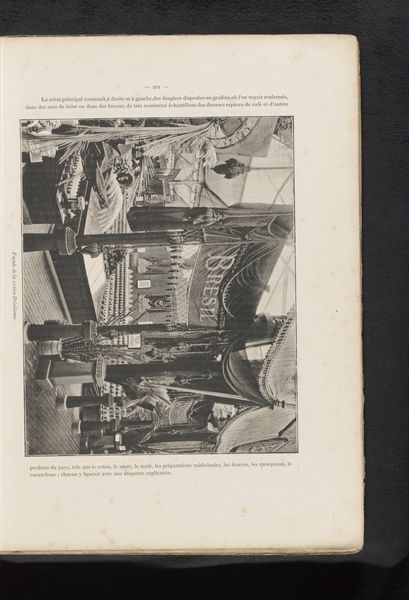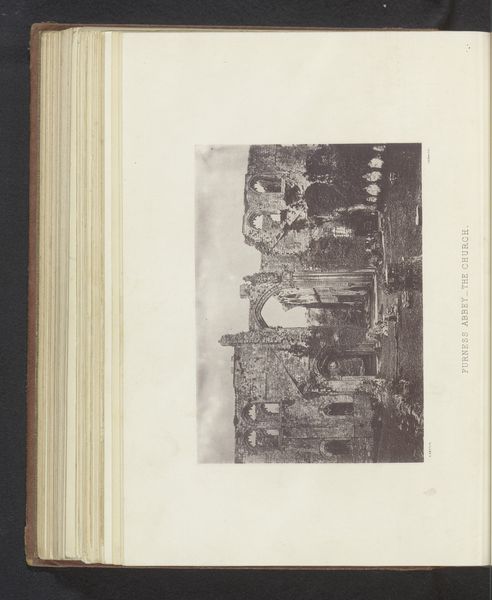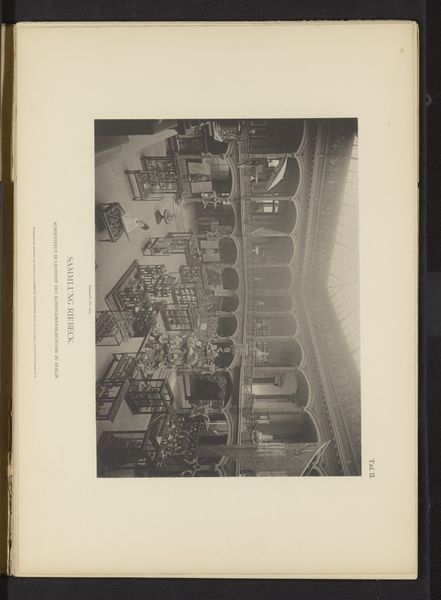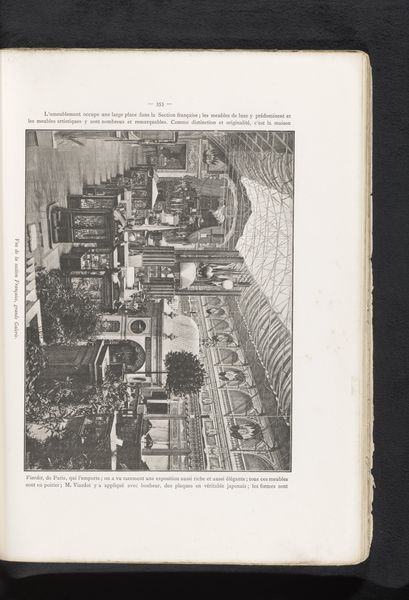
Gezicht op het Indiase deel van de Wereldtentoonstelling van 1885 in Antwerpen before 1885
0:00
0:00
print, photography, engraving
# print
#
impressionism
#
landscape
#
photography
#
orientalism
#
engraving
#
realism
Dimensions: height 215 mm, width 269 mm
Copyright: Rijks Museum: Open Domain
Curator: Oh, this one has an intriguing weight to it. So, what we’re seeing here is an engraving titled "Gezicht op het Indiase deel van de Wereldtentoonstelling van 1885 in Antwerpen," dating from before that year. It's from an anonymous artist, capturing a view of the Indian section of the World's Fair. Editor: My first thought is pure opulence! It's dark, intricate, almost overwhelmingly detailed. It's like staring into a jewel box crammed with treasures – slightly dizzying but undeniably captivating. Curator: That dizziness might stem from the orientalist lens through which such exhibitions were viewed at the time. Notice how the composition emphasizes the exotic, the foreign, placing it on display for a European audience. Think of the power dynamics at play in choosing what to showcase, what to emphasize. What does this "India" communicate? Editor: Absolutely. The symbolism jumps out at you—those elaborate carvings, the ornate fabrics, the overall sense of abundance. But it's abundance framed, controlled, observed. Is this celebration or appropriation? A genuine effort at cross-cultural understanding or a reinforcing of colonial power? Curator: Precisely. The World’s Fair, as a concept, embodies both those potentials. Looking closely, what repeating motifs catch your eye? What do they evoke within the context of 19th-century European perceptions of India? I mean we see idealized figures and objects that were selected to embody an orientalist dream and narrative. Editor: Well, there's a recurring sense of architectural majesty—domes, arches, intricate patterns. But beyond that, it's more the density that gets to me, an almost claustrophobic richness. The message reads to me like "Look at this alien wealth and culture...contained and categorized." Curator: The act of display itself alters the object, imbues it with new meanings. Even now, decades later, we’re still untangling those threads. The image carries its history. Editor: Which, in its way, makes the piece incredibly powerful, regardless of its initial intentions. It's a visual record of a complex cultural exchange, and a reminder that looking—truly seeing—requires acknowledging the loaded gaze we bring with us. Curator: A potent reminder indeed. Seeing becomes translation, interpretation—and that, I think, is the enduring fascination here.
Comments
No comments
Be the first to comment and join the conversation on the ultimate creative platform.
